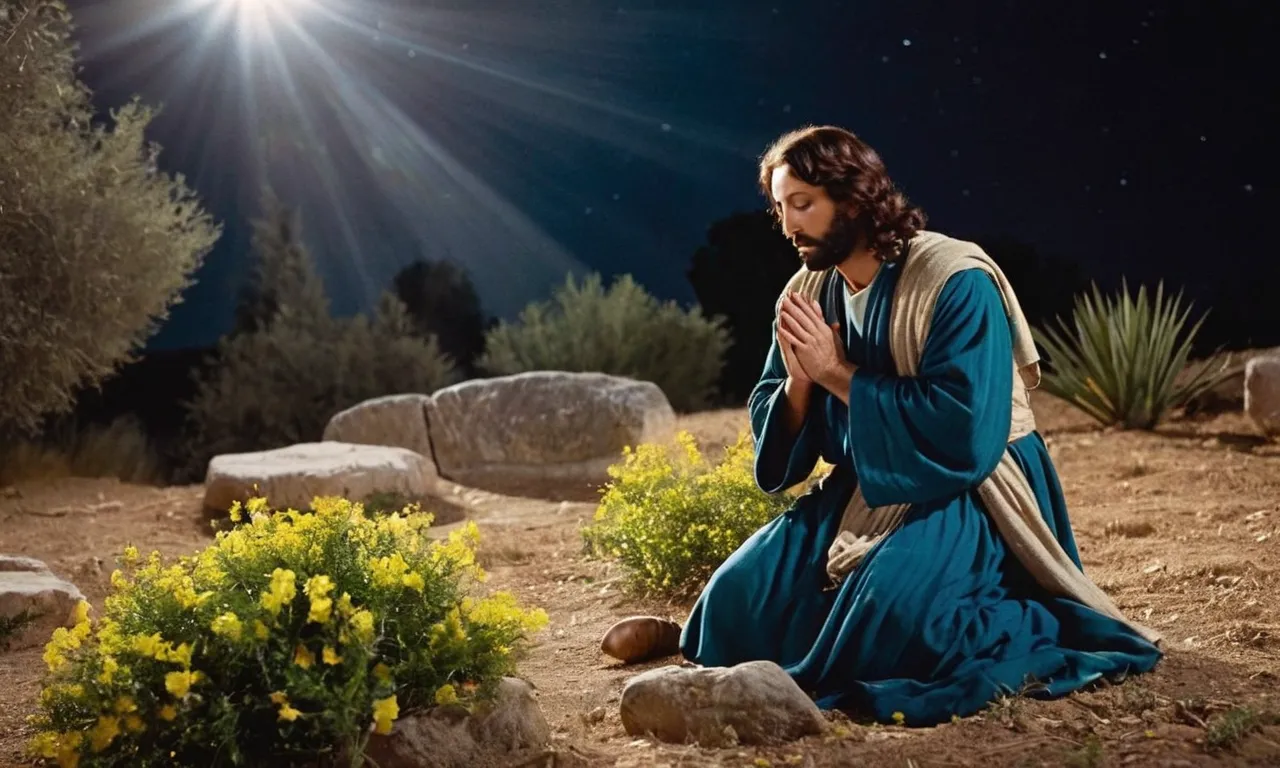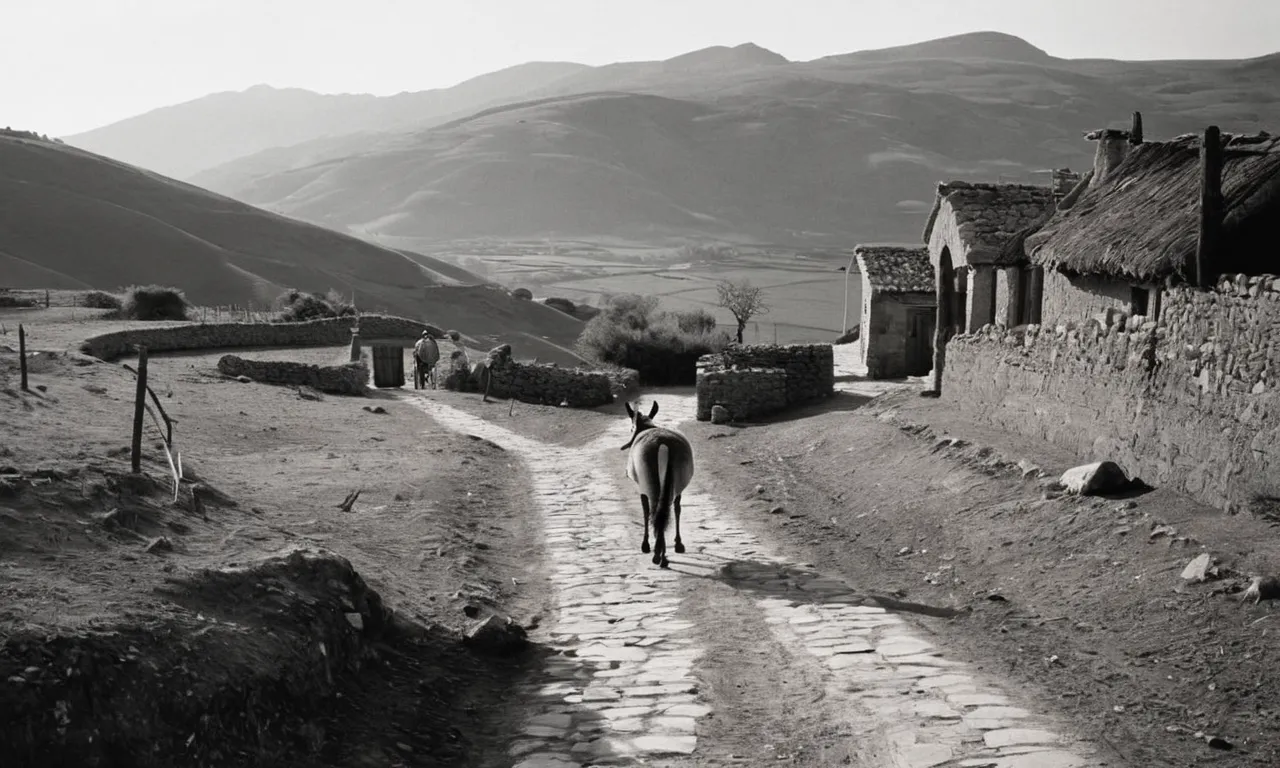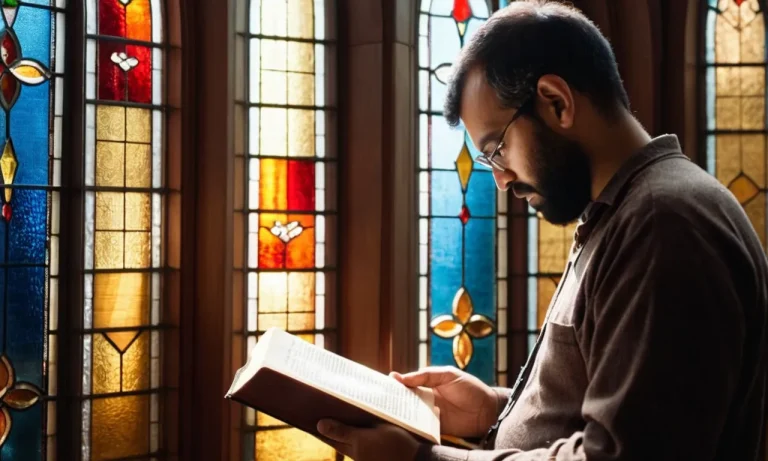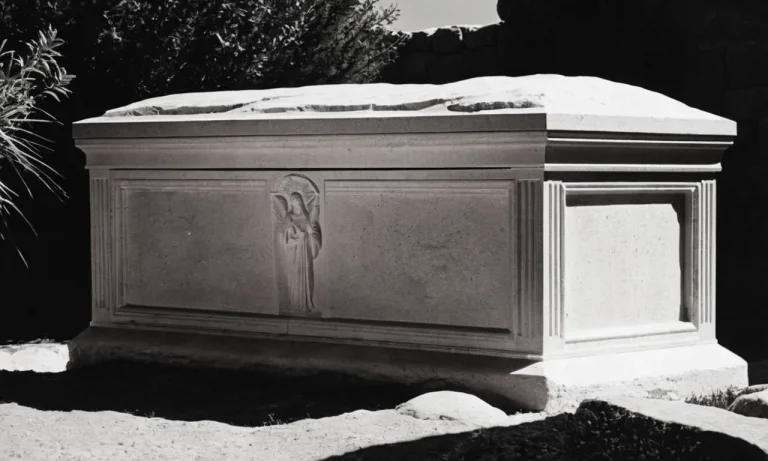Why Did Jesus Ride A Donkey? Uncovering The Significance
The image of Jesus humbly riding into Jerusalem on a donkey is one of the most iconic scenes from the Bible. But why a donkey? If you’re short on time, here’s a quick answer:
In this comprehensive article, we’ll explore the deeper significance behind Jesus’s mode of transport.
We’ll look at the prophecy from Zechariah, the symbolism of donkeys vs horses in biblical times, and what Jesus riding a donkey revealed about his messianic mission and the upside-down nature of his kingdom.
The Prophecy Behind the Donkey
Zechariah’s Foretelling
The Old Testament prophet Zechariah gave a specific prophecy around 500 years before Jesus’ triumphal entry, foretelling the Messiah would come to Jerusalem “gentle and riding on a donkey” (Zechariah 9:9). This little detail – often overlooked – carries big significance.
Jesus chose to ride into Jerusalem on a donkey to fulfill this prophecy and identify Himself as the long-awaited Messianic King.
The prophecy states: “Rejoice greatly, Daughter Zion! Shout, Daughter Jerusalem! See, your king comes to you, righteous and victorious, lowly and riding on a donkey, on a colt, the foal of a donkey.”
In riding on a donkey, Jesus presented Himself as a humble King – one who came not to conquer by force, but by love and sacrifice.
A Humble King
The donkey was associated with humility, service and peace in biblical times. Horses were linked with war and military might. Jesus intentionally chose a donkey to communicate He was not coming as a warlike Messiah, but as the Prince of Peace (Isaiah 9:6).
This act strongly contrasts the entry of conquering kings who would ride into a city on mighty steeds with their armies.
Jesus entered Jerusalem not as a conquering celebrity but in lowly humility – as One coming in peace.
This remarkable fulfillment of prophecy was a powerful declaration by Christ to all who had eyes to see that He was Israel’s long-awaited Messiah and King.
So while Palm Sunday celebrations often rightly focus on the triumphant cheers of the welcoming crowd, the deeper significance lies in Jesus’ choice to ride a humble donkey.
This seemingly small detail speaks volumes of His peaceful mission and willing sacrifice for all humanity.
Horses Symbolized War, Donkeys Symbolized Peace
The Horse of the Conqueror
In Biblical times, horses were associated with war and conquest. Kings and military leaders would ride horses as they led their armies into battle. The horse represents strength, speed, and military might.
When a conquering king entered a city, he would traditionally ride in on a large, impressive horse to intimidate the inhabitants and display his power.
For example, when Babylon conquered Judah, the Babylonian army is described as coming in on horses in Jeremiah 6:23.
The thundering of hooves would stir fear in those hearing the approaching cavalry. Even in the book of Revelation, Jesus returns on a white horse to judge and make war (Revelation 19:11).
The horse was a powerful symbol of war and victorious conquest.
The Donkey of the Servant
In contrast to the horse, donkeys in the Bible represent humility, service, and peace. Donkeys were work animals, used for carrying loads or people.
As opposed to the glory of riding on a tall, striking horse, riding on a donkey connoted simplicity and humility. Donkeys were associated with peacetime rather than war.
In Zechariah 9:9-10, the prophesied messianic king is described as coming to Jerusalem “gentle and riding on a donkey.” This contrasted the military conquests of past kings who would enter cities on war horses.
By riding a donkey, Jesus fulfilled this prophecy and highlighted his mission of humility and peace rather than war and aggression.
Interestingly, Jesus had his disciples bring him a donkey colt for his Triumphal Entry into Jerusalem in Matthew 21:1-7. This deliberate choice emphasized he was not coming as a warrior king but as a servant of peace.

Jesus Affirmed His Role as a Humble, Gentle Messiah
Not the Messiah They Expected
When Jesus entered Jerusalem on a donkey, He purposefully defied the expectations of many who were awaiting the Messiah.
The prevailing assumption was that the Messiah would be a powerful political and military leader who would overthrow Roman oppression.
Yet Jesus did not arrive on a war horse or chariot, symbols of military might; He came humbly and gently on a donkey.
This act was a living parable, as many of Jesus’ teachings were. He visually demonstrated a central truth about His identity and mission – contrary to popular belief, He came not as an earthly ruler but as a servant.
Jesus affirmed His role as a gentle Messiah who would transform hearts, not overpower human authorities. His Kingdom would be established quietly and organically, not through force or top-down control.
Riding the Donkey Fulfilled Messianic Prophecy
Deliberately Fulfilling Zechariah’s Words
When Jesus entered Jerusalem riding on a donkey, He was deliberately fulfilling a Messianic prophecy recorded centuries earlier by Zechariah. Zechariah 9:9 states: “Rejoice greatly, O daughter of Zion! Shout aloud, O daughter of Jerusalem!
Behold, your king is coming to you; righteous and having salvation is he, humble and mounted on a donkey, on a colt, the foal of a donkey.”
Jesus knew this prophecy and purposefully chose to ride into Jerusalem on a donkey to identify Himself as the Messiah.
The significance of riding a donkey rather than a horse showed that Jesus came in peace, not as a conquering military king.
Horses were used for war, while donkeys symbolized humility and peace. Jesus even chose a young donkey that had never been ridden to emphasize His gentle, humble nature.
By fulfilling this prophecy, Jesus made clear that He was the long-awaited Messiah sent by God.
Proof that Jesus Was the Long-Awaited King
The crowd’s reaction to Jesus riding the donkey also fulfilled prophecy about the Messiah. When Jesus entered Jerusalem, people laid down their cloaks and palm branches as a royal welcome (John 12:13).
This paralleled Zechariah 9:9 which foretold: “Shout aloud, O daughter of Jerusalem!
Behold, your king is coming to you.” The people were treating Jesus as royalty, acknowledging Him as king – something the religious leaders hated.
The crowd shouted “Hosanna to the Son of David!” as Jesus passed by (Matthew 21:9). This Messianic title linked Jesus to King David’s lineage. The people recognized Jesus as the king they had waited generations for – the one who would restore Israel.
Their regal reception of Jesus on a donkey proved He was the foretold Messiah who would rule on David’s throne.
Conclusion
Jesus’ deliberate choice to ride into Jerusalem on a lowly donkey rather than a horse was a living parable that revealed his humble, gentle nature as the Messiah.
By fulfilling Zechariah’s prophecy generations later, Jesus affirmed he was indeed the long-awaited King sent to transform the world through selfless, sacrificial love rather than earthly power and force.
This simple, yet profound moment forever changed history, marking Jesus as the one and only true Messiah and launching the upside-down kingdom where the last are first.
Rather than arriving to conquer by the sword, Jesus came to serve and to give his life on a cross—all foreshadowed by his humble entry on the back of a donkey.








